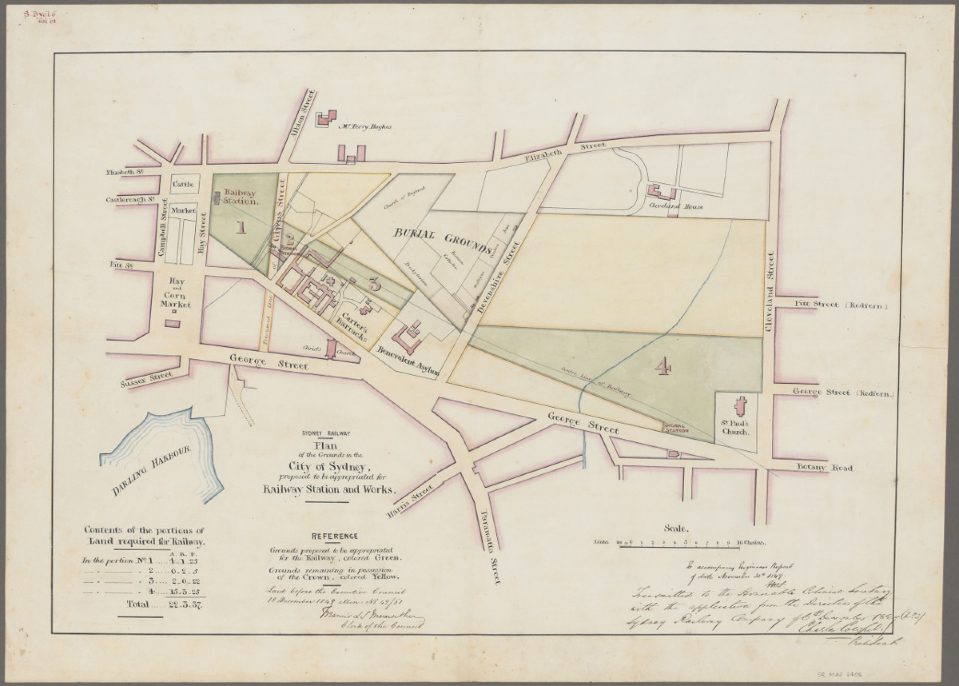The Dictionary of Sydney was archived in 2021.
Plan of grounds to be appropriated for Sydney Railway, 1849

Contributed By
(To accompany Engineer's Report of date November 30th 1849 Transmitted to the Honourable Colonial Secretary with the application from the Director of the Sydney Railway Company of 6th December 1849 Charles Cowper, President)

